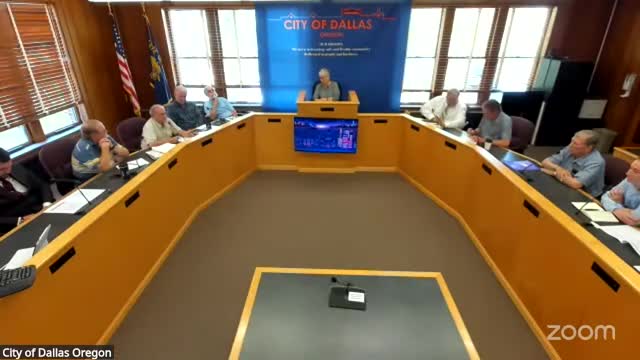City Council Explores Zoning Changes for 60 Acre Rail Property Redevelopment
July 27, 2025 | Dallas, Polk County, Oregon
This article was created by AI summarizing key points discussed. AI makes mistakes, so for full details and context, please refer to the video of the full meeting. Please report any errors so we can fix them. Report an error »

On July 27, 2025, the City of Dallas, Oregon, hosted a joint meeting of the Economic Development Commission (EDC) and the Sustainable Development and Urban Renewal Advisory Committee (SDURDAC). The discussions centered around the future development of a key property in the area, highlighting the challenges of navigating economic realities and land use decisions.
A significant point of contention was the current "limbo state" regarding the property, which is privately owned. Participants expressed concerns about the inability to fully develop plans while waiting for the "ideal customer" to emerge. One member suggested the possibility of creating a way station for trucks to transload goods onto railcars, emphasizing the need for flexibility in attracting smaller industries to the site.
The conversation also drew parallels to the Port of Grays Harbor in Washington, which faced challenges after selling land for retail development instead of industrial use. This example served as a cautionary tale for Dallas, as members reflected on the importance of making informed decisions that would not limit future opportunities.
A key topic was the potential division of the property and the implications for zoning changes. Members sought expert insight on the minimum acreage required to restore rail service, with estimates suggesting at least 20 to 25 acres would be necessary to attract significant customers. This information is crucial for the city as it considers how to maximize the site's potential while maintaining flexibility for future developments.
Additionally, the meeting addressed the process for obtaining cost estimates for rail restoration. Members discussed the option of using in-house engineering teams or hiring independent contractors to assess the property. The potential for free estimates from contractors already working with the city was also explored, indicating a proactive approach to managing costs.
In conclusion, the meeting underscored the complexities of urban development in Dallas, particularly regarding land use and economic strategy. As the city navigates these challenges, the decisions made will have lasting implications for its growth and the community's economic health. The next steps will involve further exploration of zoning options and potential partnerships to ensure the property is utilized effectively.
A significant point of contention was the current "limbo state" regarding the property, which is privately owned. Participants expressed concerns about the inability to fully develop plans while waiting for the "ideal customer" to emerge. One member suggested the possibility of creating a way station for trucks to transload goods onto railcars, emphasizing the need for flexibility in attracting smaller industries to the site.
The conversation also drew parallels to the Port of Grays Harbor in Washington, which faced challenges after selling land for retail development instead of industrial use. This example served as a cautionary tale for Dallas, as members reflected on the importance of making informed decisions that would not limit future opportunities.
A key topic was the potential division of the property and the implications for zoning changes. Members sought expert insight on the minimum acreage required to restore rail service, with estimates suggesting at least 20 to 25 acres would be necessary to attract significant customers. This information is crucial for the city as it considers how to maximize the site's potential while maintaining flexibility for future developments.
Additionally, the meeting addressed the process for obtaining cost estimates for rail restoration. Members discussed the option of using in-house engineering teams or hiring independent contractors to assess the property. The potential for free estimates from contractors already working with the city was also explored, indicating a proactive approach to managing costs.
In conclusion, the meeting underscored the complexities of urban development in Dallas, particularly regarding land use and economic strategy. As the city navigates these challenges, the decisions made will have lasting implications for its growth and the community's economic health. The next steps will involve further exploration of zoning options and potential partnerships to ensure the property is utilized effectively.
View full meeting
This article is based on a recent meeting—watch the full video and explore the complete transcript for deeper insights into the discussion.
View full meeting
